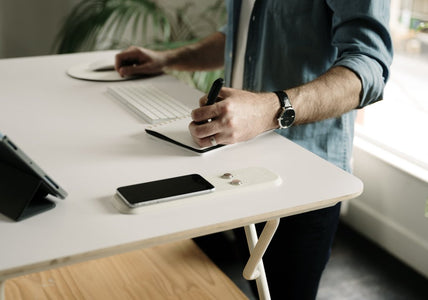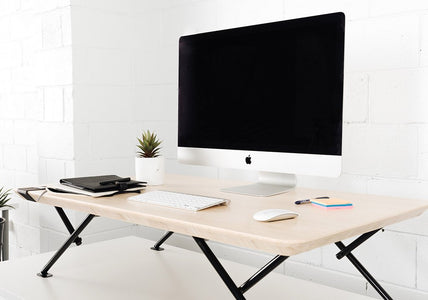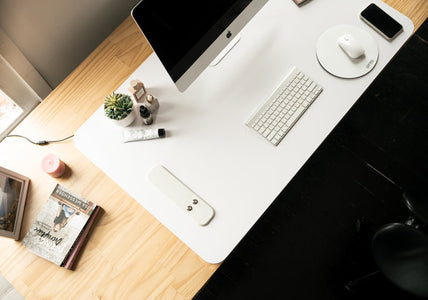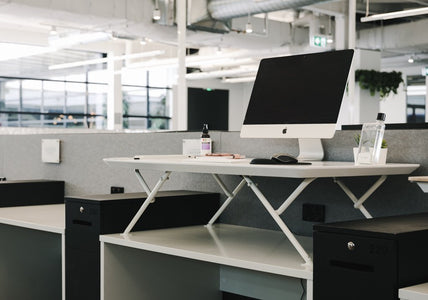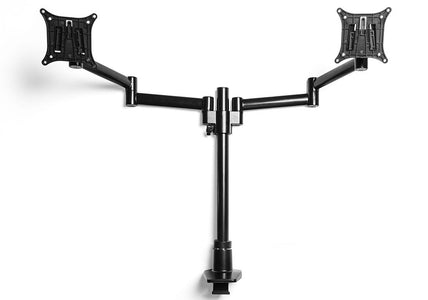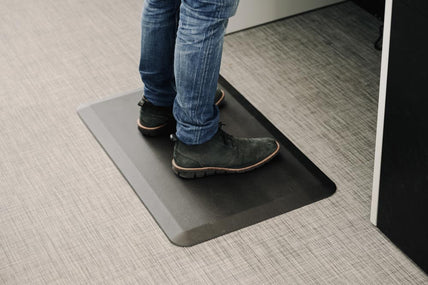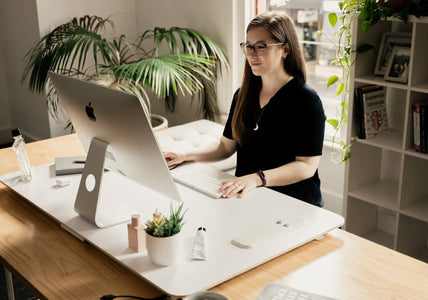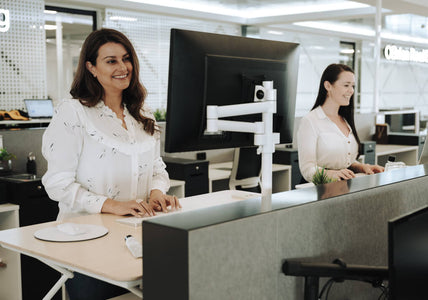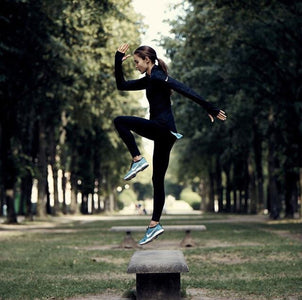How to Stay Healthy and Practice Physical Distancing at Work
By Daniel Angelini on October 26, 2020How to Stay Healthy and Practice Physical Distancing at Work
Now that government guidelines on physical distancing are changing, more companies are returning to their offices and headquarters. This easing of restrictions does not mean, though, that people should forget about following the guidelines.
More than ever, people must be mindful of safe work practices at the office. Though it will be a while until companies get back to pre-lockdown levels of business, many people are expecting to report to their offices soon. Here are some suggestions for making your desk setup safe and keeping everyone healthy as they work.
Configure desks for physical distancing
For now, companies should change their hot desking policies and assign workspaces for each team member. This practice allows employees to be responsible for their area and ensures that only one person touches the desk and equipment.
Assigning desks also keeps the risk of infection low. In case someone comes to work asymptomatic and does not know it, chances are that he will not pass the virus to others if everyone has personal desks. Source individual desks when you can, and physically separate workstations to accommodate two metres of space between each worker.
You can still have some distancing when using a bench desk setup. Leave empty seats or spaces between occupied desks and have employees sit in a zigzag pattern. This prevents staff from sitting directly in front of or right beside each other.
Put up screens between desks
Create physical barriers using materials like transparent Perspex screens. If social distancing is not an option, filters are the best way to prevent virus transmission.
Companies can still use desk screens even if they observe the two-metre rule. Acrylic screens provide another layer of defence and further separates workstations.
Put up signs and reminders
Remind people to observe social distancing by putting floor signs, hanging reminders, and laying down warning tape to ensure that people know how far they should stay apart.
Have safety signs and information about handwashing, proper waste disposal, and other helpful guidelines. Changes in desk setup will not keep people safe if they do not observe proper hygiene.
Other measures like online meetings, staggered work hours and break times, and discouraging people from sharing equipment should also continue.
Stay healthy with a stand-up workspace
A standing desk has plenty of health benefits. Boost your immune system by keeping yourself healthy even as you work. Here are a few things to consider when incorporating standing in your workday.
- Desk Height: Position your desk in a way that allows you to get up and sit down comfortably. Your posture should have you standing with your shoulders rolled back and down, your forearms parallel with the ground, and your wrists to be in the "neutral" position. A height-adjustable standing desk allows you to configure your standing desk to accommodate the height of your office tables.
- Monitor height: Like what you did with your desk, you must optimise your monitor's height. Adjust it so that the top of the monitor is in line with your centred gaze. If you do this, sometimes you get to a height that changes how you see the contrast on the screen. Tilting your monitor slightly upwards will improve the contrast.
- Anti-fatigue Mat: When you first convert your workspace into a standing station, your feet and legs will be sore after just a few minutes of standing. To combat fatigue, use a floor mat. Anti-fatigue mats relieve stress and cushion the impact on the ball and heel of the foot. Get a surface with a sturdy feel; if you get something that is too soft, it will make your limbs compensate for the dip.
- Flat shoes: It is also important to use flat shoes or zero drop shoes. These types have a heel that does not rise above the ball, mimicking how your bare foot rests on the floor. Choose a shoe that has enough cushion for uneven surfaces. At work, you might not be allowed to go barefoot or just walk in socks, primarily because of COVID-19 guidelines. However, you can go barefoot for your standing desk at home, especially if you have a carpeted or soft floor.
Utilise space efficiently
People adapt their behaviour to how their environment is laid out. You can make people move in the office along specific paths and block others. Keep people to particular floors only, and create pathways using floor tape and arrows.
Because of physical distancing, discourage the use of common areas like conference rooms and pantries. If workers must reheat their lunch or wash dishes, consider temporarily converting rooms into satellite pantries to ensure physical distancing between employees from different teams or floors.
Adapt your fitness routines
Boost employee morale by offering physically distanced fitness sessions. You can get a fitness instructor to deliver virtual workouts while people stay physically distant, or you can upload these workouts to the company's private cloud. Employees can then access these from the comfort of their home.
Encourage people to do workstation exercises as well. They can take a couple of minutes to stretch in place and move their joints and limbs to shake tired muscles awake.
Give incentives for reaching fitness goals
You could get your employees on fitness challenges to motivate them into sticking with their workout routine. Ask team leaders to set goals for each week, or assign workout buddies for each team.
Though the workout buddies do not need to exercise with each other, they do need to report to each other their progress. Having an accountability partner helps you stay motivated, especially on days when you do not feel like getting a workout in.
Conclusion
Hot desk policies have provided teams flexibility, a way to collaborate, and a lot of savings in operations costs. With the pandemic, allocated desk spaces are making a comeback. Hygiene guidelines prevent people from sharing areas and equipment and limits the number of people who can be at a facility at a given time.
These changes do not have to make work an isolating experience. You can still get your colleagues to enjoy each other's company, improve people's outlook, and keep physical distancing in place with a few thoughtful adjustments to your office setup.
Encourage people to stay healthy with standing desks from MOVI. We deliver our electric stand-up desks to anywhere in Australia, and we also carry accessories for people who want to incorporate more time on their feet while at work. Browse our products or get in touch for more information.
